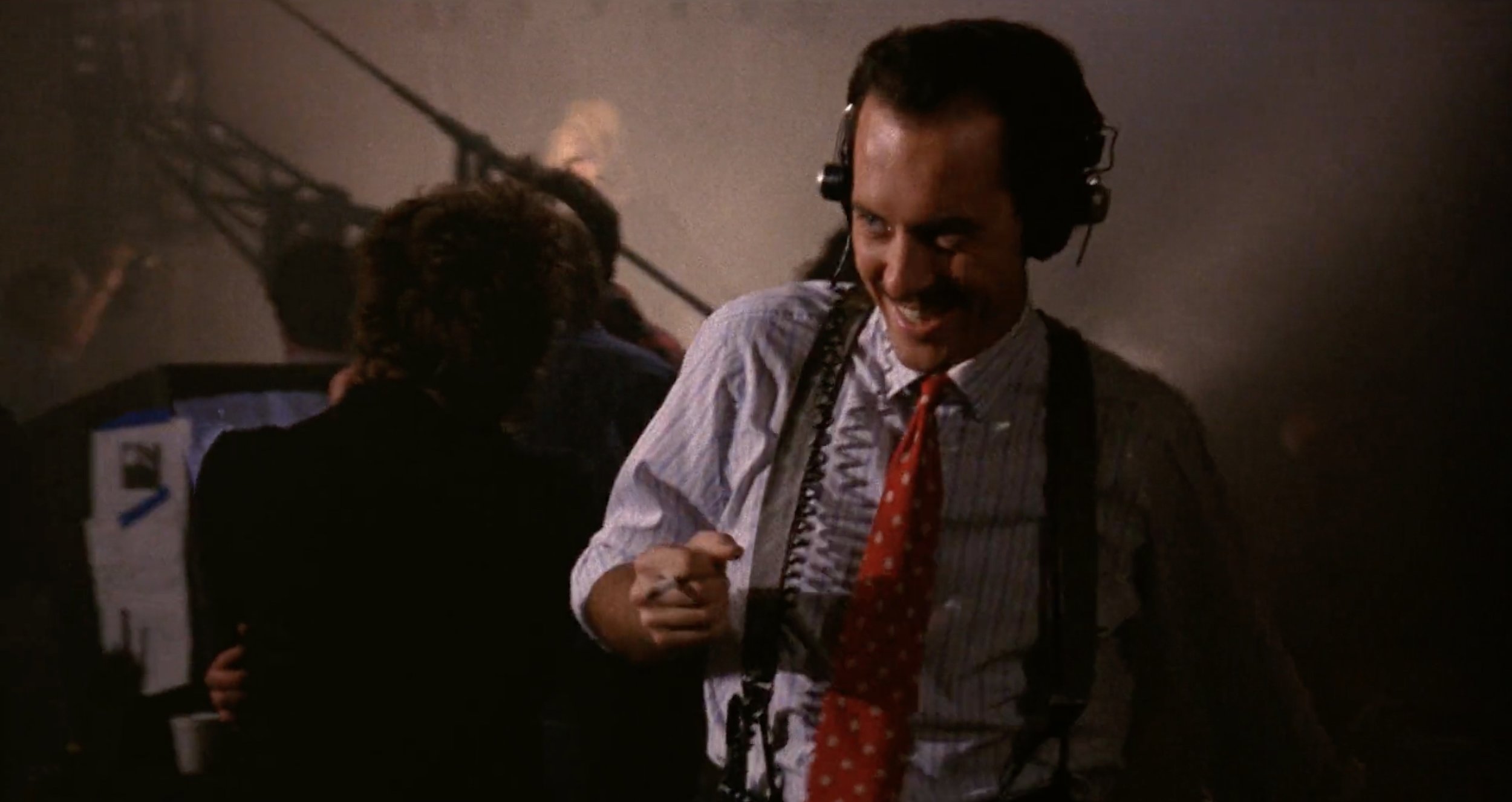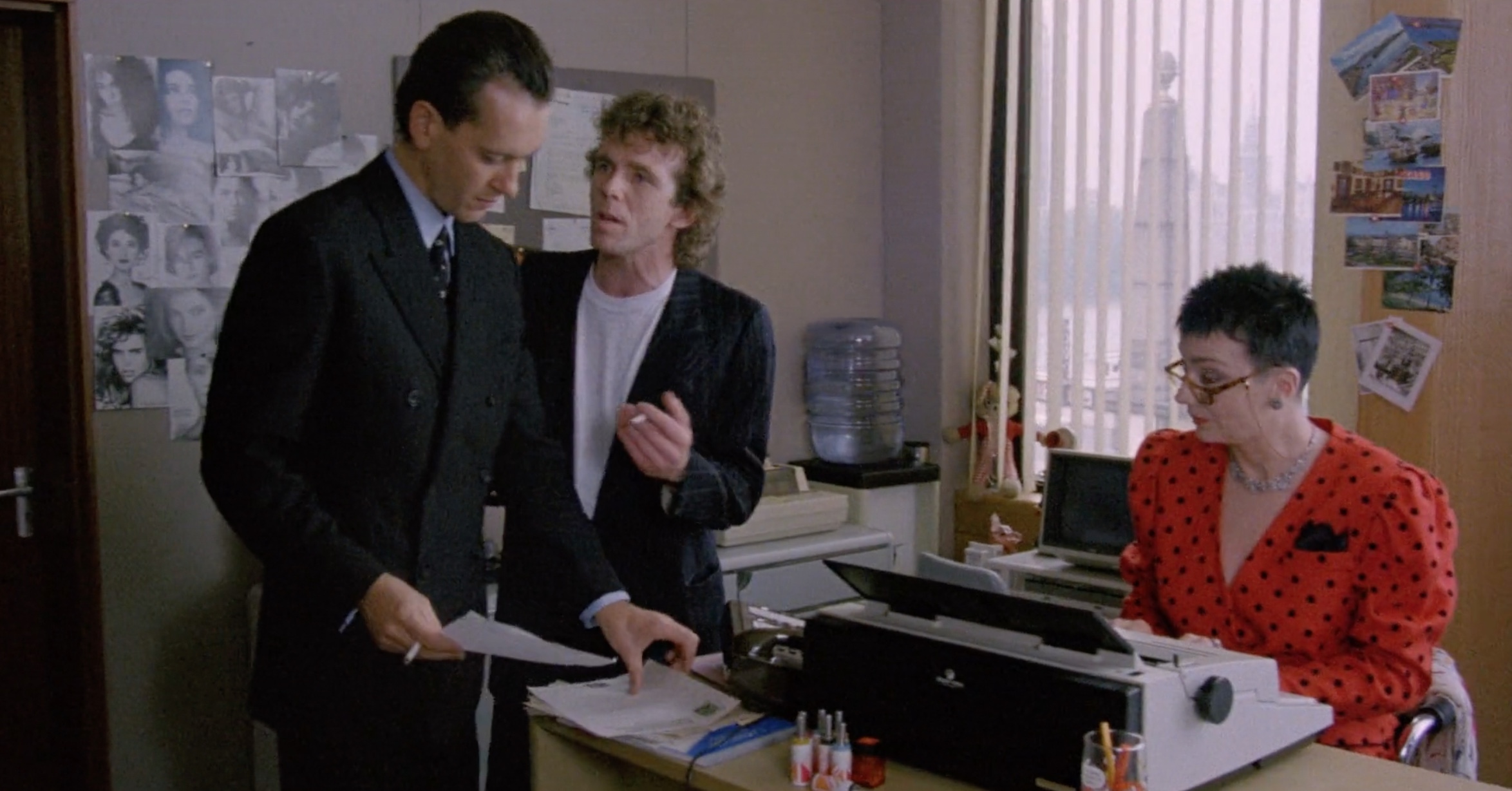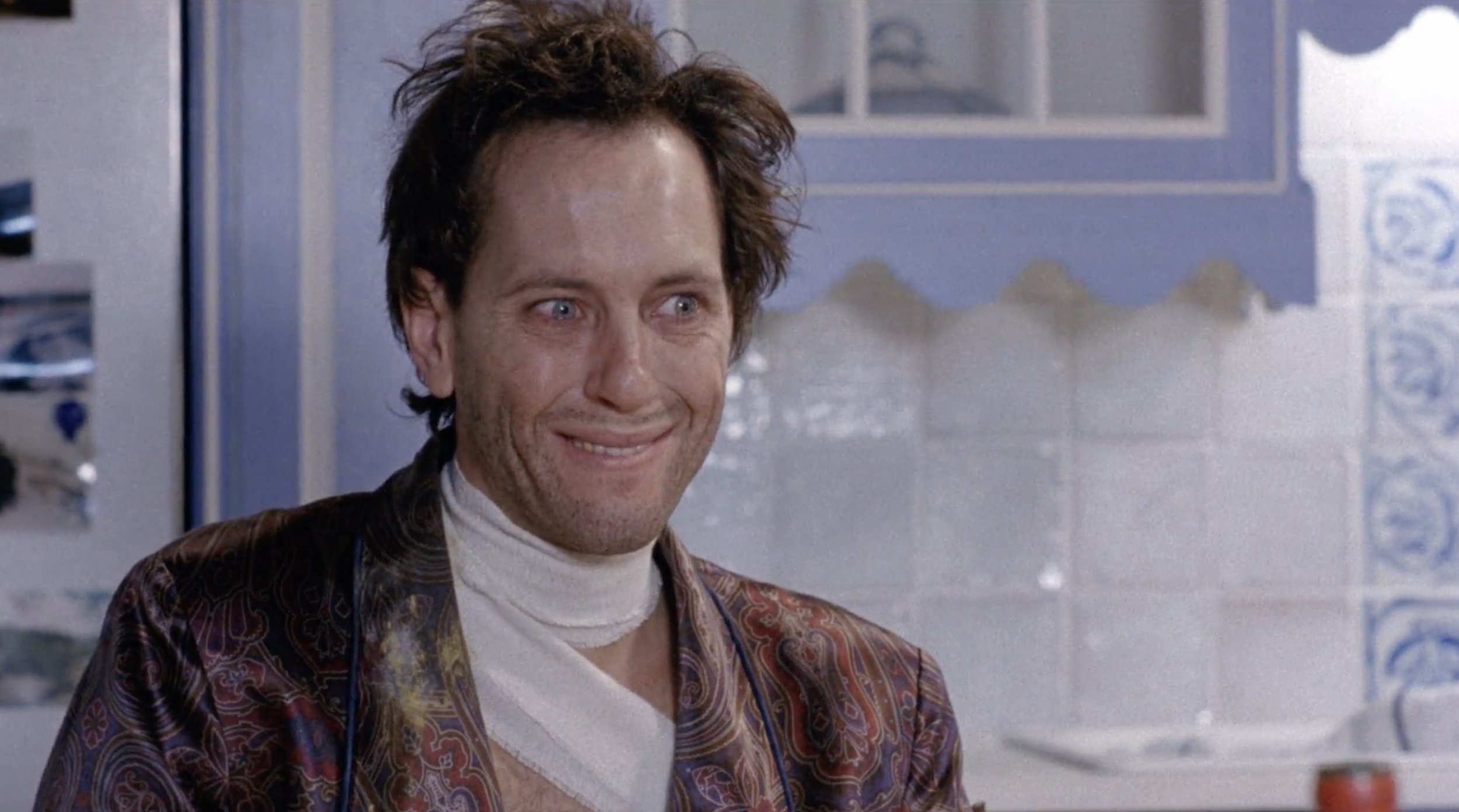How to Get Ahead in Advertising (1989)
Writer-director Bruce Robinson’s sophomore feature was much more sharply focused than his cult classic Withnail & I: Advertising. He’s not a fan. The Creative Revolution was 20 years before this film came out and cynicism had fully regained control over the industry. It probably never lost control in the first place.
How to Get Ahead in Advertising goes so far as to open with a monologue from Denis Bagley (Richard E. Grant) bluntly outlining the film’s thoughts on the industry:
“Clearly, we are looking for a label. We need a label brimming with health. And everything from a nosh pot to a white slice will wear one with pride… It must be appreciated from the beginning that even the nosh pot must be low in something. And if it isn’t, it must be high in something else. And that is its health-giving ingredient we will sell.”
Bagley: Bold-striped light blue shirt, red geometric tie and suspenders.
The advertising world in the film looks cold, corporate and sterile. It’s a world where advertisers invoke Lawrence of Arabia while announcing a campaign to popularize pimples in order to sell pimple cream. A world where an agency president half-listens to his creative director’s breakdown while also chatting on a conference call. A world where a man’s creative breakdown physically manifests itself as an evil secondary head growing out of his shoulder.
It’s fitting then that the outfits look straight out of Wall Street. Bagley on the job is a steady rotation of pinstripes, suspenders and print ties. The younger, lower-ranking members of the agency dress more like the interesting, hip people they no doubt were when they were hired. But the higher up the totem pole you get, the colder, more cynical and more businesslike your wardrobe becomes.
Bagley: Double-breasted navy pinstripe suit, blue shirt and geometric tie. Richard: Navy pinstripe jacket, white t-shirt. Secretary: Orange (red? I'm bad with colors) polka dot dress.
Contrasted with his more colorful and comfortable-looking attire that he wears around his country home, you get a very real feeling that the job is killing him. Which is, you know, the explicit point of the film. But it is interesting to see it manifested in something as subtle as different jacket fabrics and neckwear.
The only trouble is that I’m jealous of Bagley’s wardrobe both pre- and post-breakdown. That well-to-do 80s yuppie chic on display throughout How to Get Ahead in Advertising isn’t too far from my current sartorial leanings.
There’s a joke that finance bros didn’t start wearing contrast collar shirts, pinstriped suits and suspenders until after Wall Street came out. It’s somewhat unsettling seeing my personal aesthetic on display in a movie expressly about the terribleness of the industry I work in. But, hey, at least I know that I’ll probably still be well-dressed when I have my inevitable creative breakdown five years from now.
I need this robe.



